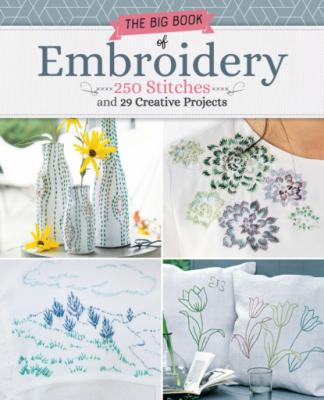ТОП просматриваемых книг сайта:
Carving Small Characters in Wood. Renee Mery
Читать онлайн.Название Carving Small Characters in Wood
Год выпуска 0
isbn 9781620083550
Автор произведения Renee Mery
Жанр Кулинария
Издательство Ingram
Beading needles are very long and thin so that you can thread several beads at once.
Wool needles have a very long, wide eye to allow you to thread thick strands of wool or cotton.
SCISSORS
Two pairs of scissors are required. Dressmaker’s scissors are used to cut the cloth and a small, sharp pair of embroidery scissors is used to cut the embroidery floss, the fabric in the hemstitch, or the fabric threads in pulled-thread embroidery.
EMBROIDERY HOOPS
They consist of two wooden circles. The outer circle has a screw so that you can enlarge it to fit on the slim lining of the fabric to be embroidered. There are several sizes. For very big embroidery projects or tapestry, use a slatted loom, with or without a foot.
THIMBLES
They protect the middle finger of the hand used to embroider and allow you to push the needle without the risk of injury. They are available in metal and porcelain and come in different sizes.
MAINTAINING EMBROIDERED WORKS
Embroidered works must be washed with greater care than regular hand- or machine-washed fabrics. They should be encased in a buttoned pillowcase and washed on a delicate cycle.
The spin cycle should be as gentle as possible. After drying, cotton embroideries are steam ironed on the reverse side, while resting against a thick fleece and placing a clean, white cloth between the iron and the embroidered work.
Wool embroideries are also ironed on the reverse side, but with a dry iron, always taking care to place a clean, white cloth between the iron and the embroidered work.
MEASUREMENTS
Throughout this book, both US and metric measurements are given. When making your projects, do not mix the two. Use either all US or all metric measurements.
STRAIGHT STITCH VARIATIONS
THESE ARE THE EASIEST STITCHES, PERFECT FOR NOVICE EMBROIDERERS. THEY ONLY REQUIRE A LITTLE PRACTICE TO GET A CONSISTENT STITCH.
For a printable PDF of the patterns used in this book, please contact Fox Chapel Publishing at [email protected], quoting the ISBN and title of this book, as well as the pattern or patterns required.
This stitch is embroidered in a line, alternatively passing the needle above and below to produce consistent stitches.
After having completed a line of running stitch, switch to the opposite direction while interleaving stitches.
First embroider a line of running stitches. Then, with a different needle and another floss, embroider an overlock stitch passing the needle from right to left and top to bottom under each running stitch.
Embroider a second line of overlock stitches from left to right and top to bottom.
Cover the surface with alternating rows of parallel running stitches.
Also called the threaded double running stitch. Embroider the rows in pairs, then, without stitching the fabric, embroider the vertical stitches above/below, alternating them equally.
Push the needle back through its exit point and pull it out. The distances between the floss and the point of entry, and between the floss and the point of exit must be equal.
First embroider a line of backstitches then embroider a line of overlock stitches, passing the needle from right to left, above and below each stitch.
Embroider rows of back stitches arranged in a column, slightly slanted, then pass a floss under the stitches without stitching into the fabric.
Embroider the rows of alternating backstitches, aligned at the ends, then pass a different color floss under the stitches without stitching into the fabric.
Embroider two rows (or more) of alternating (or randomly arranged) backstitches.
Similar to the seed stitch but passing under each stitch twice.
This stitch is embroidered like a backstitch but the needle is pushed through the left hole of the previous stitch to form a continuous line.
The stem stitch is embroidered from top to bottom. Bring the needle out below the embroidery line, reinsert the needle a little higher and bring it back out in the middle of the stitch, setting the floss to the right of the needle while following the outline.
Thread two plies of floss of different colors into the needle then embroider in the stem stitch by bringing the needle out between the two plies of floss. They can always be on the same side or move from one side to the other.
Embroider as if it were a stem stitch but bring the needle out in the middle of the floss used to separate the strands.
Embroider the first stem stitch then two overlock stitches by sliding the needle under this stitch. Embroider the stem stitch then the two overlock stitches by passing the needle under two consecutive points.
The stitch is embroidered in two steps: first the stem stitch line

